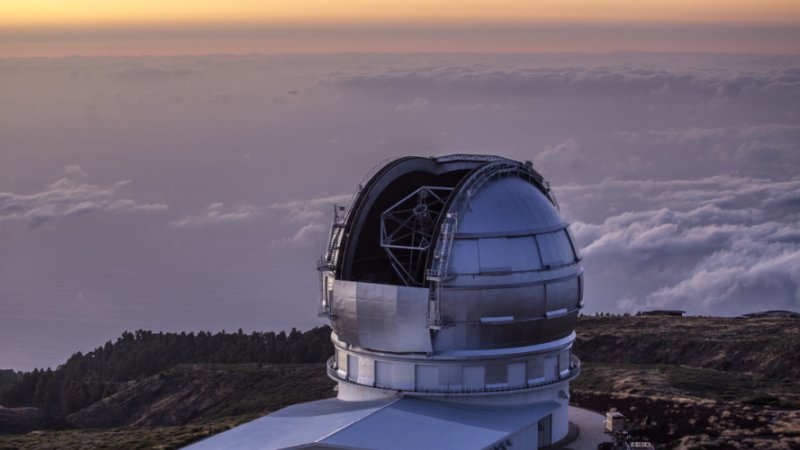Eddie Gonzales Jr. – MessageToEagle.com – The most densely populated galaxy cluster in formation in the primitive universe has been found by researchers at the Instituto de Astrofísica de Canarias (IAC) using OSIRIS, an instrument on the Gran Telescopio Canarias (GTC).
This structure, which is at a distance of 12.5 billion light-years from us, will have evolved becoming a cluster similar to that of Virgo, a neighbor of the Local Group of galaxies to which the Milky Way belongs.
Clusters of galaxies are groups of galaxies that remain together because of the action of gravity. To understand the evolution of these “cities of galaxies” scientists look for structures in formation, the so-called galaxy protoclusters, in the early universe.
In 2012 an international team of astronomers made an accurate determination of the distance of the galaxy HDF850.1, known as one of the galaxies with the highest rate of star formation in the observable universe.
To their surprise, the scientists also discovered that this galaxy, which is one of the most studied regions on the sky, known as the Hubble Deep Field/GOODS-North, is part of a group of around a dozen protogalaxies that had formed during the first thousand million years of cosmic history. Before its discovery, only one other similar primordial group was known.
In this study, the team has shown that it is one of the most densely populated regions populated with galaxies in the primitive Universe, and has for the first time carried out a detailed study of the physical properties of this system.
”Surprisingly we have discovered that all the members of the cluster studied up to now, around two dozen, are galaxies with normal star formation, and that the central galaxy appears to dominate the production of stars in this structure” explains Rosa Calvi, formerly a postdoctoral researcher at the IAC and first author of the article.
This recent study shows that this cluster of galaxies in formation is made up of various components, or “zones” with differences in their evolution. The astronomers predict that this structure will change gradually until it becomes a galaxy cluster similar to Virgo, the central region of the supercluster of the same name in which is situated the Local Group of galaxies to which the Milky Way belongs.
“We see this city in construction just as it was 12,500 million years ago, when the Universe had less than 10% of its present age, so we are seeing the childhood of a cluster of galaxies like those which are typical in the local Universe” notes Helmut Dannerbauer, an IAC researcher who is co-author of this article, in a press release.
Both the SHARDS program (Survey for High-z Absorption Red and Dead Sources) led by Pablo Pérez-González, a researcher at the Centro de Astrobiología (CAB, CSIC-INTA) and also the author of the paper and OSIRIS instrument contributed much to this research.
Stefan Geier, GTC support astronomer and co-author of the paper points out that “this highly surprising result would not have been possible without the extraordinary capacity of OSIRIS together with the large collecting area of the GRANTECAN, the largest optical and infrared telescope in the world.”
Written by Eddie Gonzales Jr. – MessageToEagle.com Staff

